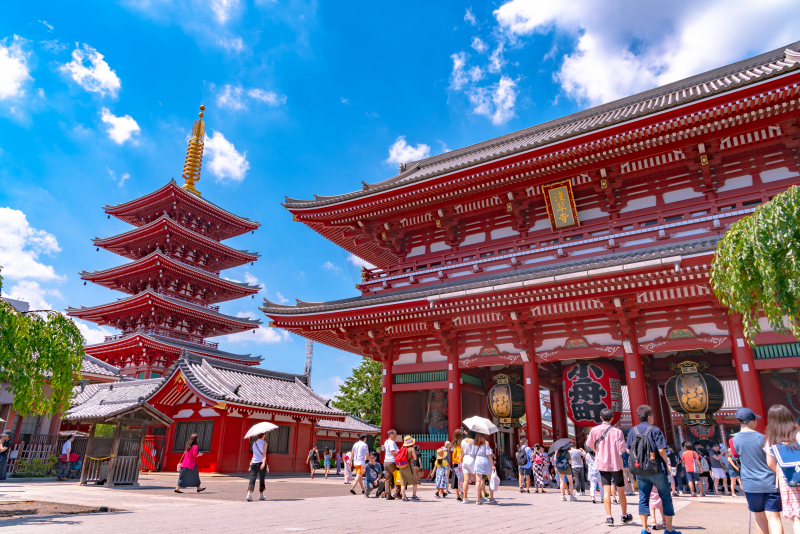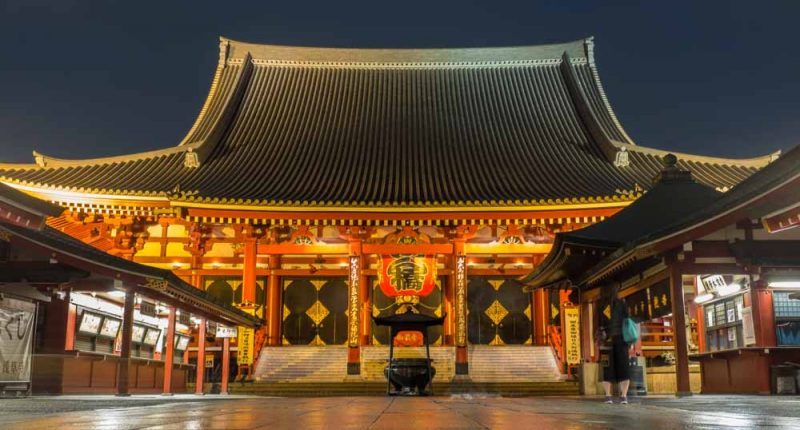Sensō-ji
Sensō-ji is an ancient Buddhist temple in the Asakusa neighborhood of Tokyo, Japan. It is one of Tokyo's oldest and most important temples. It used to be affiliated with the Tendai Buddhist sect, but after World War II, it became autonomous. A five-story pagoda, the Asakusa Shinto shrine, lies adjacent to the temple, as are many stores selling traditional products in the Nakamise-dri.
With over 30 million people each year, the Sensō-ji temple is the most frequented spiritual destination in the world, devoted to Kannon Bosatsu, the Bodhisattva of Compassion. The temple's roof is made of titanium tiles, which maintains the temple's traditional appearance while also being stronger and lighter.
The bodhisattva Kannon (Avalokitevara) is honored in this temple. According to folklore, two fishermen, Hinokuma Hamanari and Hinokuma Takenari, discovered a Kannon statue in the Sumida River around 628 AD. Hajino Nakamoto, the local chief, acknowledged the statue's holiness and enshrined it by converting his home into a modest temple in Asakusa where the villagers might worship Kannon.
The original temple was built in 645 AD, making it Tokyo's oldest temple. Tokugawa Ieyasu named Sensō-ji the Tokugawa clan's tutelary temple during the Tokugawa shogunate's early years.
During World War II, during the 10 March air raid on Tokyo, the temple was bombed and destroyed. It was afterward reconstructed and is regarded by the Japanese as a symbol of rebirth and peace. A tree that was hit by a bomb during the air raids in the courtyard has regrown in the husk of the old tree and is a symbol of the temple itself.
Location: 2-3-1 Asakusa, Taitō-ku, Tokyo, Japan












